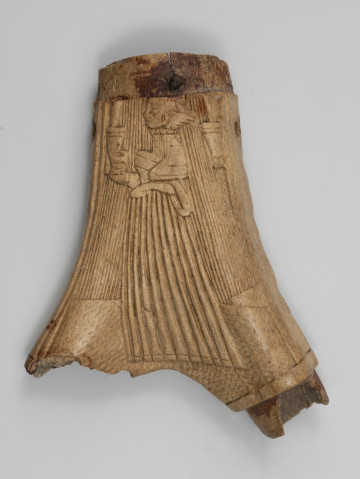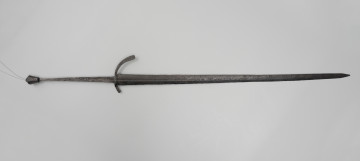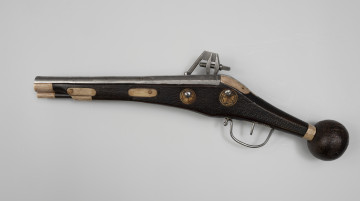
Powder box
1501 — 1600
National Museum in Szczecin
Part of the collection: Militaria
A type of musket with a butt ending in a so-called fishtail and a narrow barrel, it was produced in the Albanian region during the Turkish rule from the 17th to the 19th century. It was called "tančiča" or "tanchika" which meant something long and thin. Another term was 'arnautka' - in Turkish Arnauta meant an Albanian, and in Western European countries, this was used to describe Albanian soldiers fighting in the ranks of the Ottoman army armed with this type of rifle. The term "albanka" also appears in Polish literature to refer to gunpowder small arms with a slender design. The thin, long barrels for these muskets were manufactured and imported to the Balkans from Italy, specifically from the Val Trompia region. Another feature of this weapon type was the all-metal coating of the butt and gun carriage. The featured piece is made of two types of raw material of different colours with an additional mother-of-pearl inlay on the butt. The surface of the butt is ornamented with engraved motifs of floral tendrils and geometric patterns, as well as silver and copper rivets. The weapon has a Mediterranean-type flintlock called a miquelet. On the side near the lock and on the underside of the gun carriage, there are steel wheels used for attaching a belt, allowing the weapon to be slung over the shoulder while walking. Justyna Bądkowska
Author / creator
Object type
firearm
Technique
incrustation, gunsmithing techniques
Material
steel, brass, wood, nacre
Origin / acquisition method
acquisition
Creation time / dating
Creation / finding place
Owner
Muzeum Narodowe w Szczecinie
Identification number
Location / status

1501 — 1600
National Museum in Szczecin

circa 1390 — 1450
National Museum in Szczecin

1588 — 1591
National Museum in Szczecin
DISCOVER this TOPIC
National Museum in Lublin
DISCOVER this PATH
Educational path